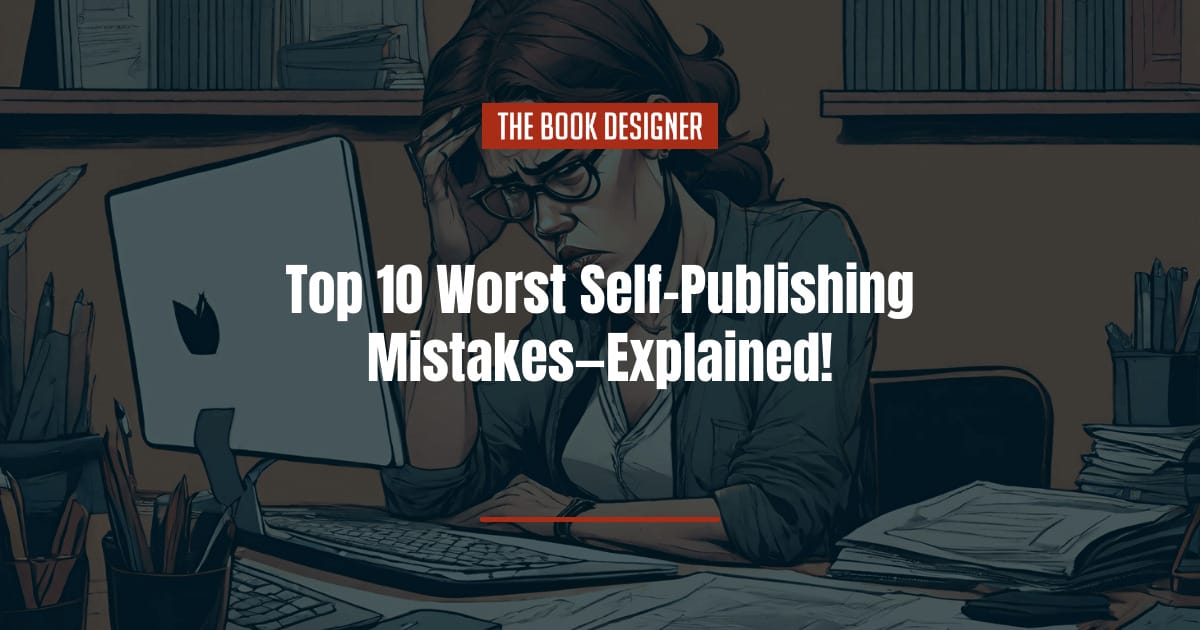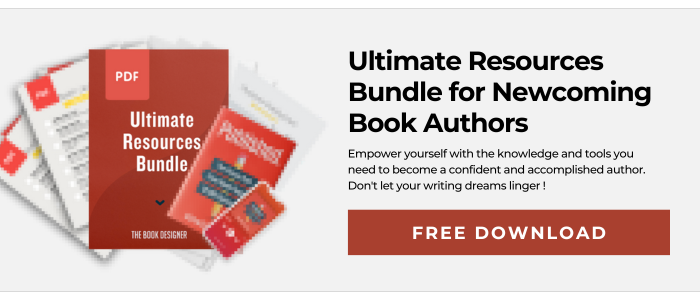I learn a lot from the comments readers leave on the blog. People have pointed out errors, shown me resources I hadn’t heard of and made connections that had never occurred to me. It’s a big web out there, and one of the things I enjoy most is this sharing of knowledge, resources and experiences.
Two weeks ago I published Top 10 List of the Worst Self-Publishing Mistakes, a semi-serious look at normal mistakes newcomers to self-publishing might make. But a couple of people asked if there was going to be a follow-up article. They wanted to know the reasons why these were the so-called “worst mistakes” so they could avoid making them.
So here is the follow-up, the explanation for why you wouldn’t want to do any of these things when it comes time to publish your book. I’ve copied the questions from the earlier article and given an explanation for each.
Below, we’ll cover the top 10 mistakes that self-published authors make:
Worst Self-Publishing Mistakes #10: Reusing ISBNs
“You thought you could re-use that ISBN you paid so much for since the novel you put it on last year isn’t selling anyway.”
Explained: You never want to re-use an ISBN, or even use it for another edition of the same book. The ISBN is known as a unique identifier. It’s intended to be assigned to one edition of one book. Your book’s information has been entered in book databases everywhere, and you will only create tremendous confusion between the two works, hurting sales for both, if you attempt to re-use an ISBN. Just don’t do it.
Worst Self-Publishing Mistakes #9: Using Copyrighted Material
“Everybody knows the words to the song, so it’s okay to quote lyrics from it throughout your novel, right?”
Explained: Check out this blog post about using bits of songs in your writing. The author here found, after using only snippets of 60s songs in a party scene, that he had a liability of over $6,000. Just like paintings, poems, or any creative expression, people’s lyrics and music are protected by copyright law, and violations of this law can be expensive and very damaging. If you want to use it, get permission first.
Worst Self-Publishing Mistakes #8: Low-Res Images
“The photos looked fine on your screen, and that means they will look fine when they’re printed, it just makes sense.”
Explained: Graphics on screens are all displayed at a resolution of 72 dots per inch (dpi) in Reg-Green-Blue (RGB) colorspace. That’s just the way computers display graphics. However, when you go to print your book, your color photos will need to be 300 dpi in the Cyan-Magenta-Yellow-Black (CMYK) colorspace. So no, the image you see on your screen, no matter how gorgeous, may not have enough resolution to print well.
Worst Self-Publishing Mistakes #7: Bad Typography
“I picked Arial for my book because the name reminded me of my middle school girlfriend.”
Explained: Many people don’t notice typefaces, typography, design, serifs, ligatures, and the other elements book designers take for granted, and why should they? But that doesn’t mean it doesn’t matter what typeface you use. The classic book typefaces, when used correctly, will produce a book that’s beautiful, readable, and reader-friendly. That’s why they’re classics.
Worst Self-Publishing Mistakes #6: Using a Vanity Press
“I know they’re charging me $6,000 to publish my book and taking all my rights, but I get 10 copies, absolutely free!”
Explained: Well, $6,000 divided by 10 is…The point here is that if you want to publish your own book you may be better off using a plain print-on-demand company like Amazon KDP or Lulu than a vanity publisher. Why? The vanity publisher makes its money from sales to authors—that’s you. If you use a service like Amazon KDP you are the publisher and you use them as a printer. You pay only for the services you decide you need, and then you make your money from book sales. Done-for-you publishing packages are another great option for self-published authors, but be sure you’re retaining the rights to your work!
Worst Self-Publishing Mistakes #5: Using the Wrong POV
“I thought it would sound more impressive if I wrote my memoir in the third person. All my sports heroes talk that way.”
Explained: By far the best way for most authors to present their information in nonfiction books is with a clear, active, straightforward style. Attempts to create unusual styles, strange viewpoints, exotic points of view almost always fail since they are incredibly difficult to carry off well. Both you and your readers will be well served by a natural conversational style that follows a normal and expected narrative. This will make your valuable information stand out, not an eccentric way of saying it.
Worst Self-Publishing Mistakes #4: Committing to Huge Print Runs Without a Plan
“I really got the unit price down, but I had to print 10,000 copies. You have any room in your garage?”
Explained: Having a plan on how you intend to market, publicize, and sell your book before entering into book production is highly recommended. The unit cost of your book is meaningless if you never sell any. Many self-publishers are using digital printing through print-on-demand distribution to minimize this type of risk. However, you have to plan your book, its retail price, and your method of distribution before going to press.
Worst Self-Publishing Mistakes #3: Trying to Charge Book Reviewers
“Sure, I included an invoice with all the books I sent to book reviewers. Hey, they don’t care, it’s just a big company paying the bill.”
Explained: Although reviewers do usually work for larger companies, sending an invoice with a review copy will ensure that while you won’t get paid for the book, you won’t get a review either. The convention is that you are asking for valuable editorial time and space in a publication, and certainly the least you can expect is to provide a book to anyone gracious enough to go to the trouble of reviewing your book.
Worst Self-Publishing Mistakes #2: Ignoring Standard Book Sizes
“It was cheaper to print my novel as an 8-1/2″ x 11″ book because I got so many words on each page.”
Explained: Although it’s true that you can save money in digital printing by creating a book with fewer pages, a novel printed full page on letter-size paper with small margins and tight lines to “get so many words” on a page is likely to be read by no one. Making your book difficult to read is a quick way to eliminate many readers. There is no economy in printing books that no one wants to read. Pay attention to standard book sizes.
Worst Self-Publishing Mistakes #1: A Poorly Designed Cover
“What do you mean, I need a cover designer? Don’t books come with covers?”
Explained: Most author-services companies are only too happy to put a cover on your book for a fee, or to turn you loose on their cover creation programs. But it’s pretty easy to tell most of the books that have been “designed” this way, and it isn’t a pretty picture. If your book is worth publishing, and you want people to buy it, and you understand the cover is the primary way that people will identify the book wherever it appears, don’t you think it might be worthwhile to get a cover designer you can afford to create a cover for you?
Well, there you have it. If there was any doubt, you now know some good things to avoid when it comes time to publish a book.




